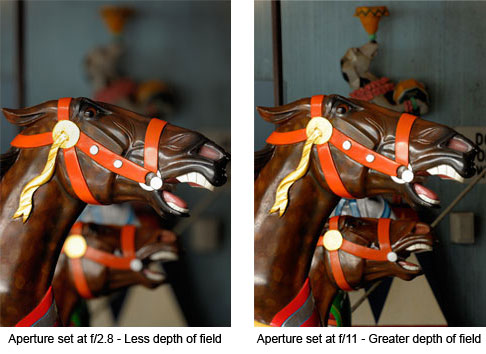In photography, the aperture refers to the opening in the lens through which light passes into the camera. The size of the aperture can be adjusted to control the amount of light that enters the camera, and to affect the depth of field in the resulting image.

Aperture is measured in f-stops, which is a ratio of the lens’s focal length to the diameter of the aperture opening. The lower the f-stop number, the larger the aperture opening, and the more light that is allowed to enter the camera. For example, an aperture of f/2.8 is larger than an aperture of f/8.
A larger aperture (lower f-stop number) results in a shallower depth of field, which means that only a small portion of the image will be in sharp focus, while the rest of the image will be blurry. This effect can be used creatively to isolate a subject from its background, or to draw attention to a specific area of the image.

Conversely, a smaller aperture (higher f-stop number) results in a deeper depth of field, which means that more of the image will be in focus from front to back. This is useful for landscape photography or other situations where you want everything in the image to be in sharp focus.
Adjusting the aperture also affects the exposure of the image. A larger aperture (lower f-stop number) lets in more light, requiring a faster shutter speed or lower ISO to maintain the correct exposure. A smaller aperture (higher f-stop number) lets in less light, requiring a slower shutter speed or higher ISO to maintain the correct exposure.
Overall, aperture is an important tool for controlling the amount of light that enters the camera, and for creatively controlling the depth of field in the resulting image.
